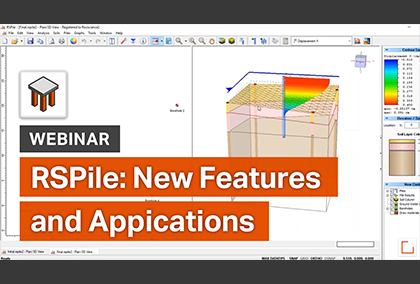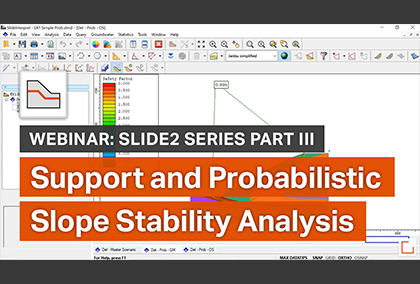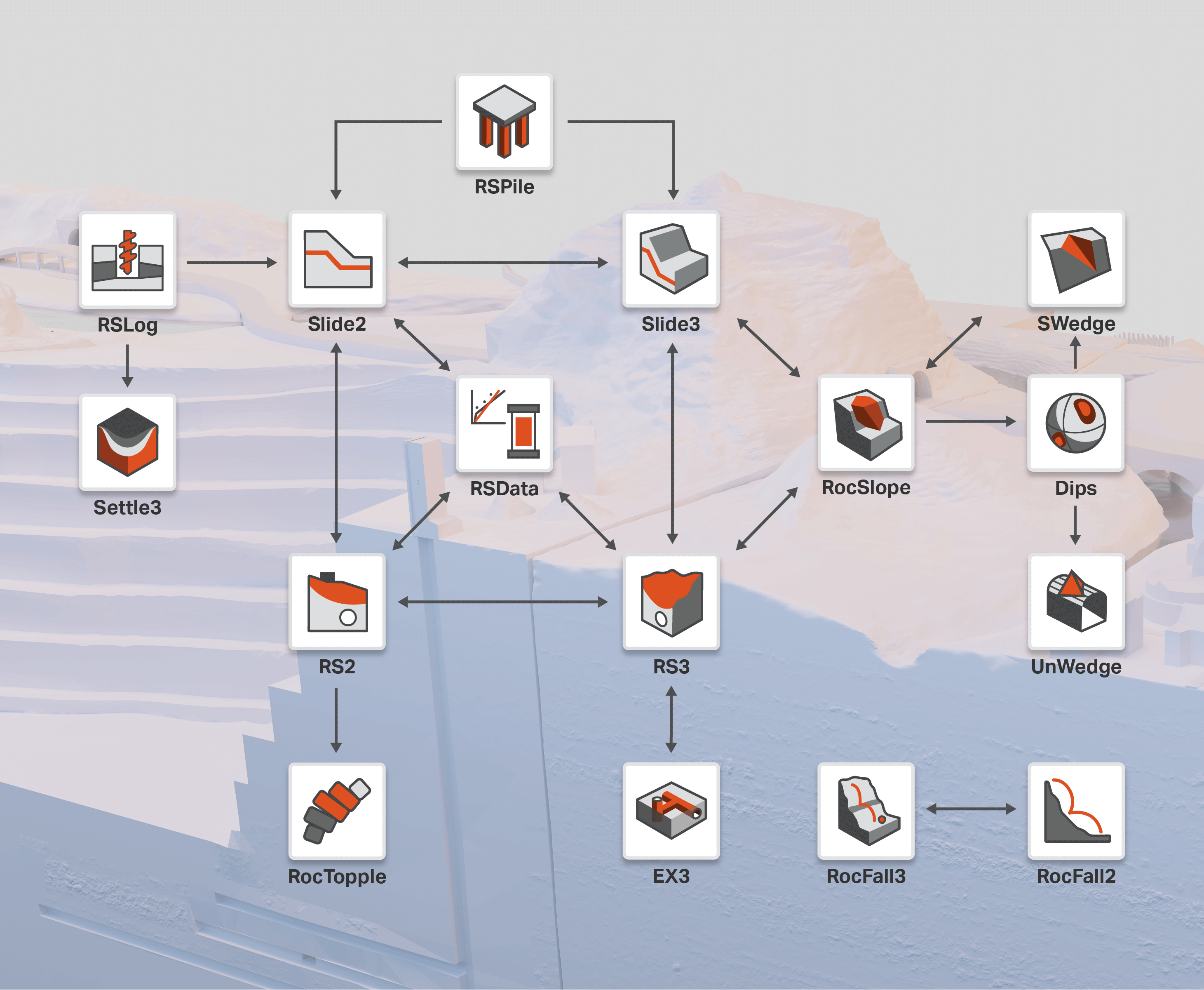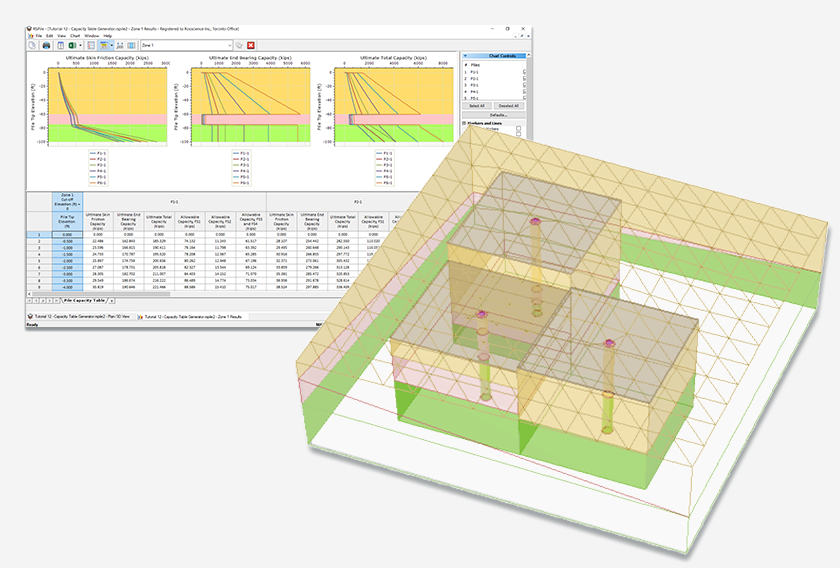Integration Meets Innovation with Slide2 & RSPile
When it comes to designing supports for your 2D slope stability analysis, few programs are as comprehensive or user friendly as Rocscience’s Slide2. One of the best examples of this is the seamless integration of Slide2 with the general pile analysis software RSPile.
Unlike other geotechnical software suites, the data from Rocscience’s various 2D and 3D slope stability programs (for example: Slide3 and RS3) can be easily imported from one program to another. With RSPile and Slide2 in particular, the programs are built to work in conjunction with each other. With these two programs, a user can easily install a pile support in Slide2, define the pile model in RSPile, and compute the pile resistance functions against sliding to be used for their slope stability analysis.
How to import an RSPile file into Slide2
The installation of piles is one of the most common methods of slope stabilization in the industry. This makes the general pile analysis software RSPile a particularly useful addition to your slope stability suite. The RSPile program allows users to design and analyze numerous types of piles to meet the needs of their geotechnical project including driven piles, axial and laterally loaded piles, and grouped piles. In the case of slope stability analyses, RSPile automatically calculates the pile resistance by allowing the user to specify the range of sliding depths examined in the analysis and producing the corresponding pile resistance functions.
These pile resistance functions produced in RSPile are easily imported into the Slide2 program. Simply open the Define Support Properties dialog and select RSPile as your support type. From here you can launch RSPile and import the RSPile file directly into Slide2.
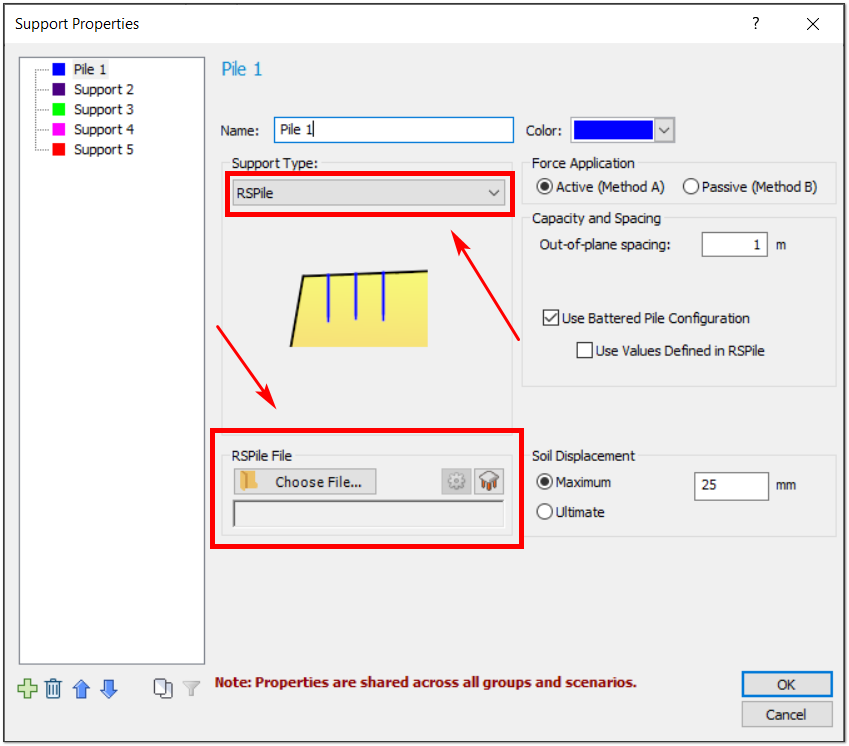
With one RSPile model file a user can define the soil and pile properties for multiple piles of various embedment lengths and soil layer configurations.
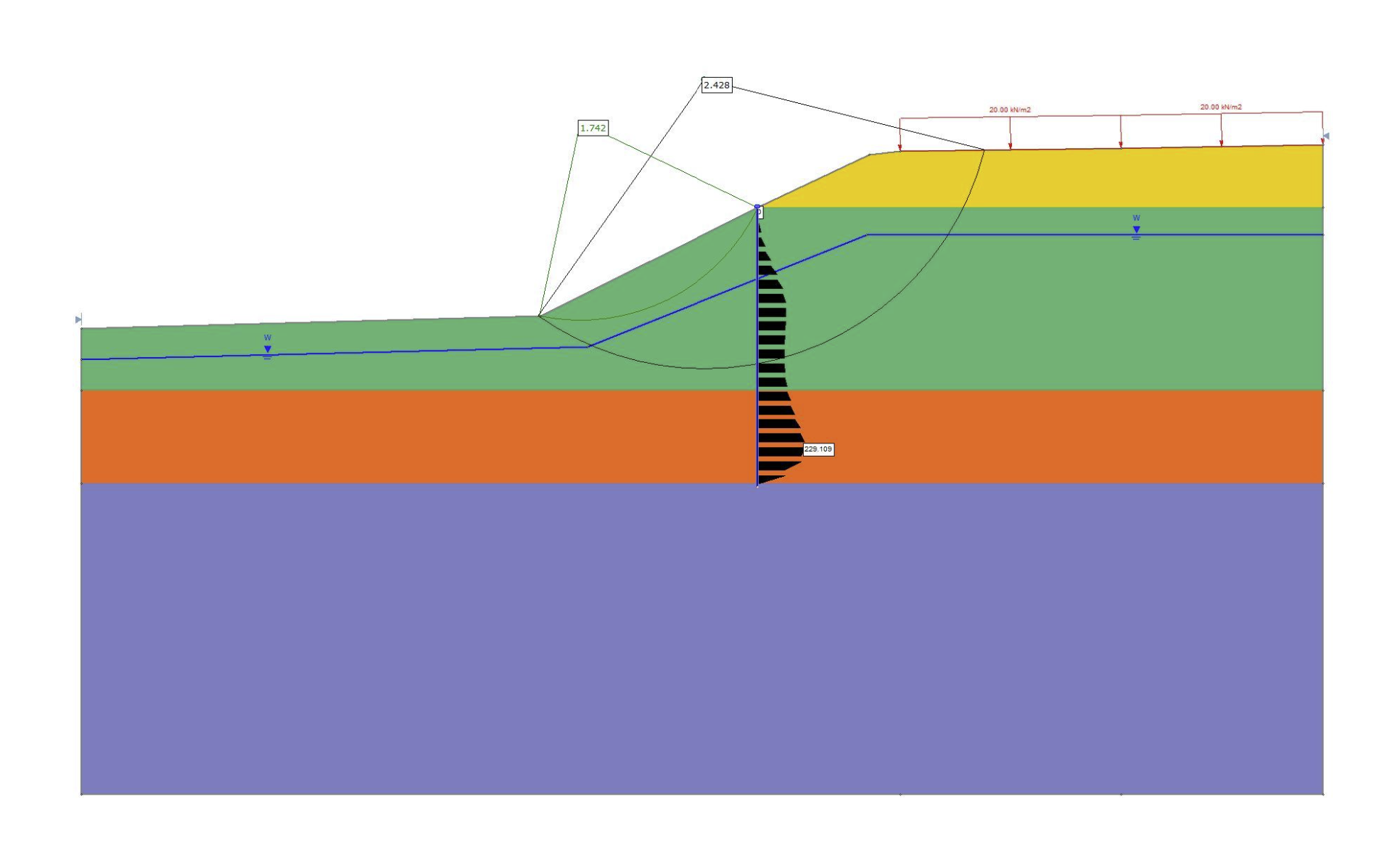
For each intersected slip surface to a pile, Slide2 will use linear interpolation to determine the appropriate resultant pile resistance and compute the factor of safety.
Make your suite complete with RSPile
This past month RSPile has released several exciting new features including:
- New loading feature that allows loads to be applied to a specific point along the length of the pile, instead of only at the top.
- Linearly distributed traction loads can now be applied to piles by specifying depths and load values at the top and bottom.
- Improved design tools for reinforced and concrete piles allowing users to specify casing and reinforcement pattern lengths.
